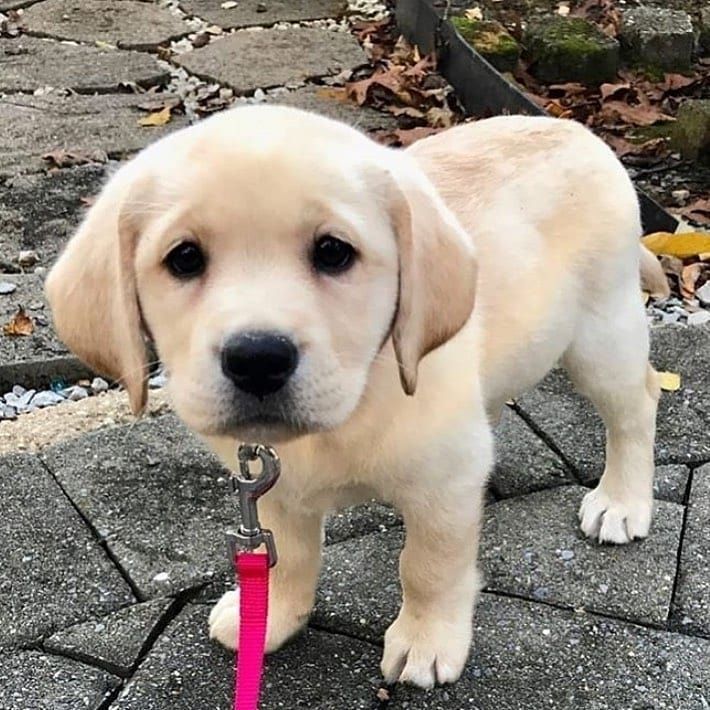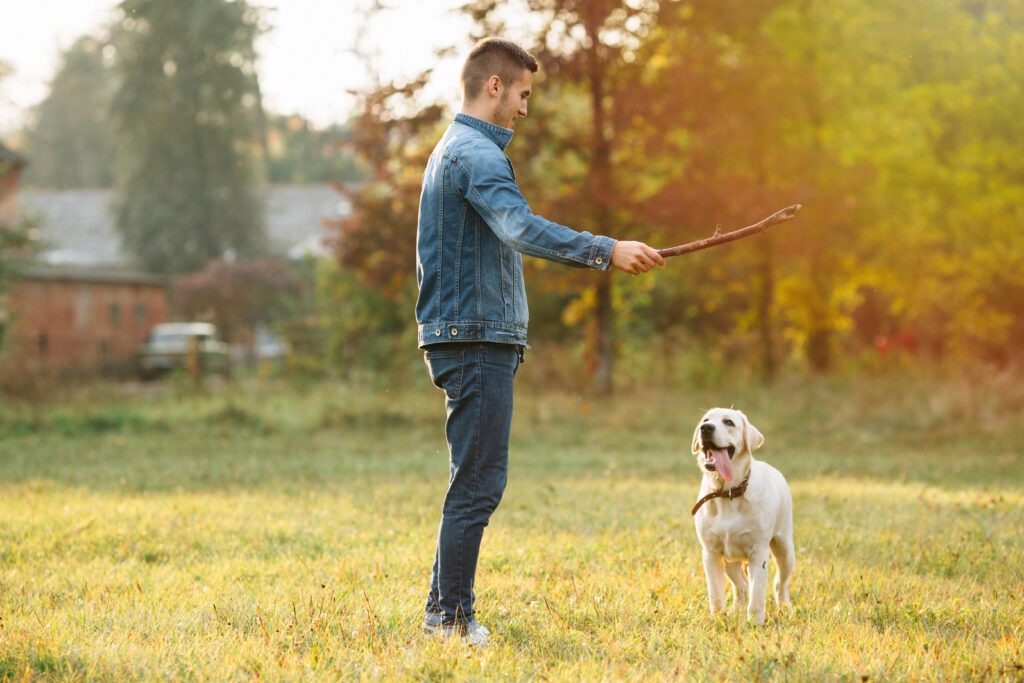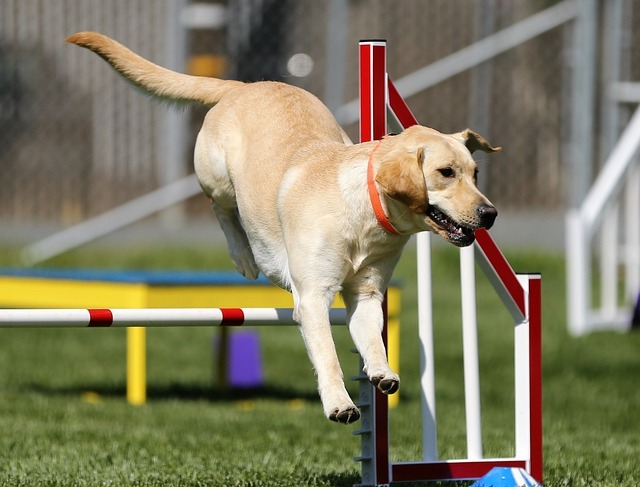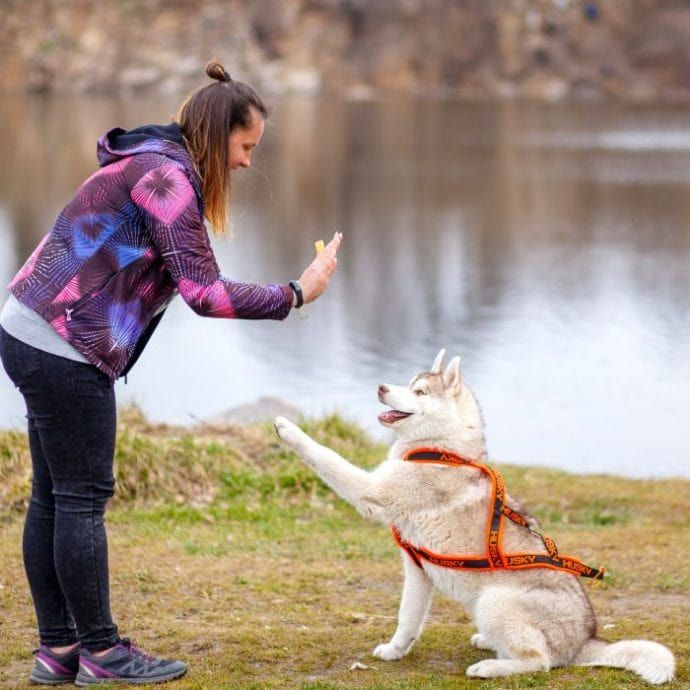The best way to train a Labrador puppy at home is to use positive reinforcement, daily training schedule, and step-by-step methods that match your puppy’s age.
- Why Labrador Puppy Training Matters Early
- Golden Rule: Positive Reinforcement
- Daily Labrador Puppy Training Routine
- Week-by-Week Schedule (8–16 Weeks)
- Potty Training a Labrador Puppy at Home
- Crate Training Your Labrador Puppy
- Teaching Your Labrador Puppy to Walk on a Leash
- Recall Training: Teaching "Come"
- Teaching "Drop It" and "Leave It"
- Solving Common Labrador Puppy Behavior Problems
- When to Start Puppy Training Classes
- FAQs
Training a Labrador puppy at home is both exciting and challenging. Labrador Retrievers are one of the most popular dog breeds in the United States, renowned for their friendliness, intelligence, and eagerness to please, making them excellent companion dogs for families and individuals alike. But raising a Labrador puppy without a structured training plan can quickly turn overwhelming.
This comprehensive Labrador puppy training guide will walk you through:
- A daily Labrador puppy training routine you can follow at home
- A week-by-week training schedule for the first 16 weeks
- Step-by-step instructions for potty training, crate training, leash walking, recall, and basic obedience commands
- Solutions to common Labrador puppy problems such as chewing, biting, barking, and separation anxiety
Why Labrador Puppy Training Matters Early
Labradors are among the easiest breeds to train because they are intelligent, food-motivated, and people-oriented. However, these same qualities can backfire without guidance:
- High energy: Labradors need daily exercise, otherwise they become restless and destructive.
- Chewing and teething: Labs chew aggressively during teething stages, and without redirection, they destroy furniture, shoes, and household items.
- Strong pulling: Even as puppies, Labs learn to pull hard on the leash, making walks difficult.
- Jumping and barking: They get excited when greeting people and may bark for attention.
- Separation anxiety: Labs bond deeply with their families, so crate training and independence training are crucial.
Starting obedience training for Labradors early helps prevent these problems and sets the foundation for a calm, obedient adult dog.
Golden Rule: Positive Reinforcement
The number one rule for training Labrador puppies at home is to use positive reinforcement. Labradors respond best to rewards like treats, praise, and toys. Avoid punishment—it damages trust and often makes behavior problems worse.
Pro Tip: Every time your puppy does the right thing, reward immediately. This teaches them faster than any correction ever could.
Daily Labrador Puppy Training Routine

Consistency is everything in Labrador puppy training. Puppies learn patterns quickly, so a daily training schedule builds habits that stick.
Here’s a model daily Labrador training routine:
Morning (7–8 AM)
- Take puppy outside for potty.
- Feed breakfast.
- 5–10 minutes of obedience (sit, name recognition).
- Short crate rest.
Midday (10–12 PM)
- Potty break every 2–3 hours.
- Play session with toys or light leash training indoors.
- Lunch in crate, then nap.
Afternoon (3–5 PM)
- Potty break.
- Practice leash walking in the yard.
- Short obedience session (come, stay).
- Dinner.
Evening (6–8 PM)
- Recall games (“Come” and “Drop it”).
- Calm chewing or puzzle feeder.
- Crate rest.
Bedtime (10 PM)
- Final potty break.
- Crate for overnight sleep.
Week-by-Week Schedule (8–16 Weeks)
8–10 weeks
- Begin house training immediately.
- Introduce crate as a safe space.
- Teach name recognition and “Sit.”
- Socialize with safe people, sounds, and surfaces.
10–12 weeks
- Potty training every 2–3 hours.
- Start leash walking indoors.
- Crate for naps and bedtime.
- Gentle handling for grooming and vet prep.
12–14 weeks
- Add “Stay” and “Come” recall.
- Begin “Drop it” and “Leave it.”
- Controlled outings after vaccinations.
Weeks 14–16
- Practice impulse control: sit before food, sit at doors.
- Longer leash walks with distractions.
- Gradual independence training (short crate periods while you leave).
By following this schedule, your Labrador puppy will master the basics within 3–4 months.
Potty Training a Labrador Puppy at Home
Potty training is usually the first priority for new Labrador owners. Luckily, Labs are smart and catch on quickly with consistency.
Steps for Fast Potty Training
- Take your Labrador puppy outside first thing in the morning, after meals, naps, and play.
- Always go to the same potty spot.
- Use a verbal cue like “Go potty.”
- Reward with a small treat the second they finish.
Tips for Success
- Puppies under 12 weeks need potty breaks every 2 hours.
- Keep them supervised or in a crate indoors.
- Use a potty log to track progress.
Pro Tip: Never punish accidents—redirect and reward outside success.
Crate Training Your Labrador Puppy
Crate training is essential for Labradors. It helps with potty training, prevents destructive chewing, and gives puppies a safe place to relax.
3-Step Crate Training Method
- Step 1: Leave the crate open, toss treats inside.
- Step 2: Feed meals in the crate with the door open.
- Step 3: Close the door briefly, then extend crate time gradually.
Pro Tip: Make the crate cozy with a blanket and a chew toy. Never use the crate for punishment.
Teaching Your Labrador Puppy to Walk on a Leash

Labradors grow quickly into powerful dogs. Leash manners are vital.
Loose-Leash Walking Training
- Start indoors with a lightweight leash.
- Reward your puppy for standing calmly by your side.
- If they pull, stop moving. Only walk when the leash is slack.
- Gradually practice outdoors with distractions.
Training a Labrador puppy to walk without pulling early makes life easier when they’re adults.
Recall Training: Teaching “Come”
Recall is a life-saving command. Labradors are natural retrievers, which makes recall games fun.
Steps
- Have two people sit a few feet apart.
- Call your puppy’s name + “Come!”
- Reward generously when they reach you.
- Gradually increase the distance and distractions.
Make recall the most rewarding game your Lab knows.

Teaching “Drop It” and “Leave It”
Labs love to carry things in their mouths, which can lead to dangerous chewing.
Drop It Training
- Offer a toy.
- Present a higher-value treat.
- When the puppy drops the toy, reward with the treat.
Leave It Training
- Place a treat in your closed hand.
- Wait until your puppy looks away, then reward with a different treat.
These commands prevent accidents and protect your belongings.
Solving Common Labrador Puppy Behavior Problems
Biting and Teething
- Provide frozen toys for relief.
- Redirect chewing to appropriate items.
- Stop play immediately if biting gets rough.
Jumping on People
- Teach “Sit for greetings.”
- Ignore jumping, reward calm sits.
Barking
- Identify the trigger: boredom, excitement, or alert.
- Redirect with training or enrichment.
Overexcitement
- Use short play sessions + naps.
- Mental games (puzzle feeders, sniffing games) calm Labradors better than just physical exercise.
When to Start Puppy Training Classes
While home training is essential, puppy classes provide professional guidance.
- Enroll at 12–16 weeks, after vaccinations.
- Choose trainers who use positive reinforcement methods.
- Classes help with distraction training and social skills.
In conclusion, training a Labrador requires dedication, consistency, and patience. By understanding your dog’s needs and personality, you can tailor your training methods to help them learn and grow into well-behaved, happy dogs. Remember, training is an ongoing process, so be prepared to invest your time and energy into your dog’s development.
FAQs
How do you train a Labrador to sit ?
Train the Labrador dog sit command in 3 steps:
- Firstly, hold treat in your hand.
- Secondly, Take a treat near dog’s nose. When dog raise its body to smell the treat, move your hand down word, on sitting reward dog with treat.
- By repeating this process several time but keep session short can teach the dog sit commands.
Do Labradors shed hair?
Yes, Like other breeds Labrador dogs also shed hair, therefore, brush their hair at least once a week. During fall and spring seasons they require extra coat grooming as in these seasons their shedding process become fast.
How to train Labrador Retrievers?
Following steps are helpful in training Labrador Retrievers:
- Socialized them in early age especially at puppyhood stage.
- Start Obedience Training.
- Set regular schedule for exercise.
- Use training tools such as Clickers or toys for Training purpose.
- Train them throughout their life.




